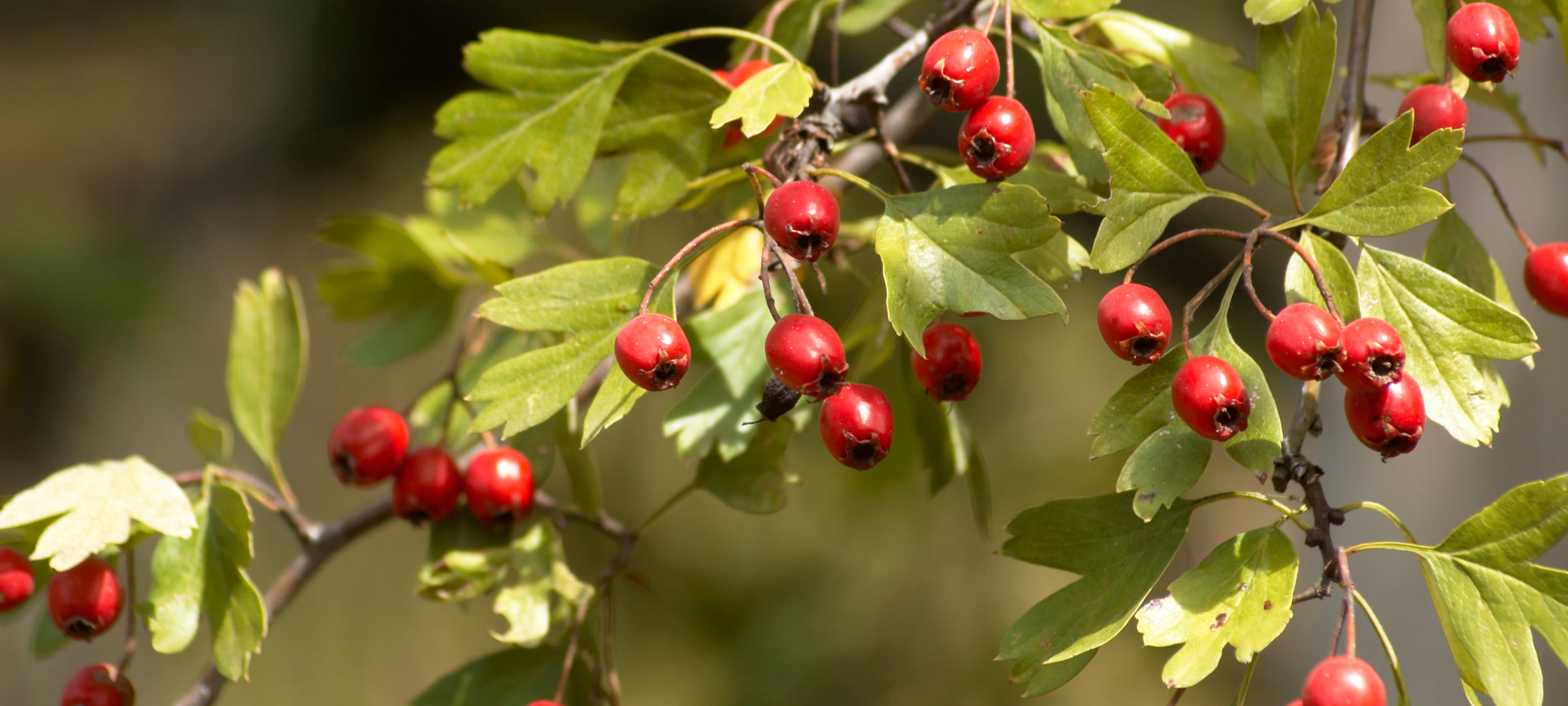
Latin: Crataegus Oxyacanthus
Part Used: fruit, flower, leaf, young twigs
Constituents: flavonoids, vitamin B, vitamin C, choline, acetylcholine, quercetin, triterpenoids, cratetegin, rutin, procyanidin
Medicinal Actions: cardiac tonic, hypotensive, astringent, diuretic
Hawthorn has been used for centuries, going as far back as the first century Greek herbalist, Dioscorides. Historically, it has been used in jams, wines, cordials, and candies. Its hard wood is valued for building fires that burn hot. Hawthorn is best known as a herb for the heart. It’s valued as a cardiac tonic because it is gentle and doesn’t build up in the body.
A great deal of folklore is associated with Hawthorn, as well. The ancient Druids considered it to be ‘sacred tree medicine,’ and believed it housed fairies, especially when found growing alongside oak and ash trees. As such, it was considered unlucky to bring the flowers into the house — the risk being that you might bring the fairy folk with them.
At Greek weddings, Hawthorn twigs and flowers were part of the marriage wreath, symbolizing chastity and prosperity. At marriage ceremonies in Ireland, couples would dance around the Hawthorn to gain its blessing. To protect newborns from evil, sprigs of Hawthorn were tied to their cradles, and for May Day or Beltane celebrations, the sprigs were used to decorate the maypole to welcome in fertility and renewal.

Uses & Combinations
Hawthorn is a hardy plant that can live up to 200 years. Some varieties grow as short, thick hedgerows, while others are stately trees. It will tolerate a variety of conditions, but it helps to choose a species that will thrive in your growing zone.
The berries, leaves, and flowers of the Hawthorn plant are rich in bioflavonoids, antioxidants, and procyanidins, all of which tone the heart. It dilates the arteries and veins, allowing for increased blood flow and the release of blockages. Hawthorn strengthens the heart muscle, regulates blood pressure, and helps to maintain healthy cholesterol levels.
As a tonic, Hawthorn is wonderful for preventing heart problems, but it can also be used as a treatment for heart disease, edema, angina, heart arrhythmia, and blood pressure, both high and low. Hawthorn is particularly valuable for restoring the heart to normal function, as in the case of blood pressure, where it will help to lower that which is too high, or heighten that which is too low. And it does so gently.
In addition to its heart health benefits, Hawthorn aids in stabilizing collagen and supporting ligament, tendon, and muscle health. For those who bruise easily, it will help strengthen the capillaries. It also has value in supporting the emotional heart, to ease grief and sadness.
For high blood pressure, combine Hawthorn with Lime Blossom, Mistletoe, and Yarrow. For the grieving heart, combine with Lemon Balm, Milky Oat Tops, and St. John’s Wort.

Identifying
Features & Cultivation
In the spring, it flowers with small, clustered white blossoms, which you can harvest when fully developed. In the fall, it bears small red berries, which can be harvested and used fresh, or dried to later use. Harvest the leaves beginning in mid-spring and through early autumn.
TEA RECIPE
Rosemary Gladstar’s Heartease Tea
This tea can help in easing grief and feelings of loss, as well as mitigating the effects of seasonal affective disorder (SAD), making it an ideal mid-winter blend.
2 parts Hawthorn leaf, flower, and berry
1 part Milky Oat Tops
1 part Lemon Balm
1 part St. John’s Wort leaf and flower
Honey (optional)
Combine herbs in a jar or mug and cover with boiling water. Let steep at least 10 minutes, or up to 45 minutes for maximum strength.






